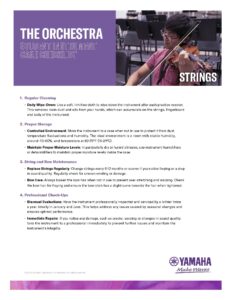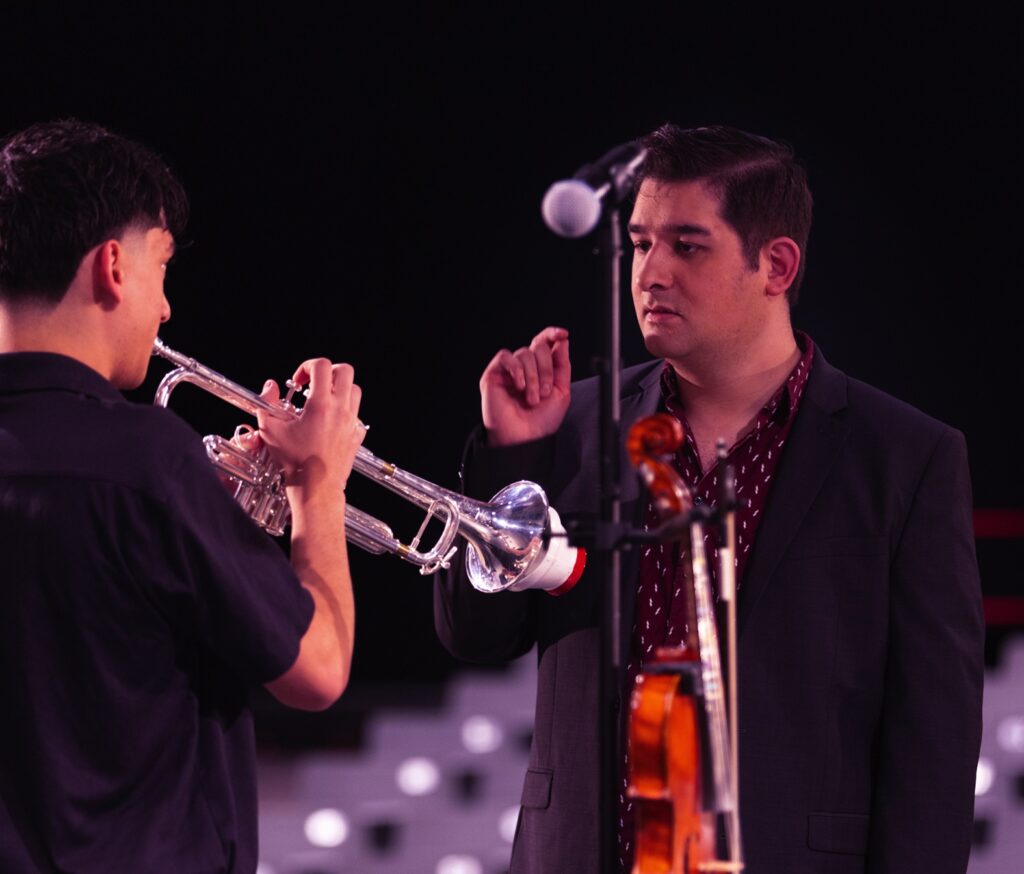Tagged Under:
6 Mistakes New Teachers Make
Give yourself time to settle into your job as a music educator and stop fixing things that aren’t broken.
“I’m thinking of changing how we do warm-ups next semester,” a young teacher told me a few years ago. He was halfway through his second year, exhausted, overwhelmed and already in the middle of rewriting his curriculum for the third time.
I asked him why.
He shrugged. “I don’t know. I just feel like I’m supposed to keep improving things.”
Stop! This is a trap.
When you’re new, you don’t always know what’s working yet — so it’s easy to think if something isn’t perfect, it must be broken. It usually isn’t.
Below are six common mistakes new teachers make when they try to fix things that don’t need fixing. I’ve made most of these mistakes myself. Some more than once.

1. Changing Systems that Are Working
Whether it’s how you organize folders, take attendance or run warm-ups — if it’s working, keep doing it. Don’t let boredom or insecurity convince you to start over just for the sake of it.
Early in my teaching career, I changed my lesson plan template three times in one semester because I thought it would make me feel more “put together.” It didn’t. It just wasted time. I spent hours fiddling with fonts and table borders and trying to make my headers more “professional.” None of that made me a better teacher. It just gave me another reason to stay up late on Sunday night pretending I was being productive.
THE YAMAHA EDUCATOR NEWSLETTER: Join to receive a round-up of our latest articles and programs!
One year, I decided our rehearsal warm-up needed a total overhaul. I abandoned the flow that was working — long tones, flexibility, articulation, chorale — because I wanted something that sounded more “collegiate.” The result? I wasted two weeks of rehearsal on experiments that mostly annoyed my kids and made me question my life choices.
Systems aren’t supposed to make you feel creative or inspired. They’re supposed to make your job easier. If they do, then leave them alone. Chances are, you may have abandoned a system right before it fully took effect.
That includes your Google Drive folders. No one needs seven sub-folders for one concert cycle. Take it from a hypocrite who currently has eight sub-folders.

2. Reinventing Your Concert Prep Process Every Year
You don’t need a brand-new method for getting kids ready for performances every semester. Find a process that works — backward planning from the performance date, regular checkpoints, clear expectations — and stick with it.
The temptation here is real. I still catch myself scrolling through other programs’ Instagram pages thinking, “Maybe I should do a countdown wall … or stickers … or have section leaders write inspirational notes on the whiteboard every day.”
Those extras aren’t what make the concert successful. The music gets better because you rehearsed it well, with clear goals and enough time. Plus, the kids understood what was expected of them. Period.

Download this Yamaha Instrument Care-Strings guide.
Early on, I thought every concert cycle needed a new theme or some kind of gimmick to keep kids engaged. I wasted time creating themed rehearsal slideshows. Movie themes, Disney themes, the “best-section-gets-to-name-my-next-child” theme, etc. None of it mattered — all I needed was a clear plan and then simply follow it.
Consistency wins. Kids like knowing what to expect. They appreciate routine more than you think. So do parents. So do judges. So does your future self.

3. Overhauling Communication for No Reason
Stop re-writing your parent email templates. If it was clear and effective last time, copy it. Adjust the dates. Move on.
Same goes for handbooks, syllabi, calendars. I used to waste hours trying to make every email sound like a fresh, exciting announcement. Parents don’t care. They just want the dates and the details, not your best stand-up routine.
I once sent an email about concert attire that included a joke about ’90s boy bands and a pun about ironing shirts. I thought it was hilarious. No one replied. A kid still showed up in jeans. And no, the performance was not in sync. (Get it? It’s a play on the boy band NSYNC. OK … I’ll show myself out.)
What worked? The same bullet-pointed list I’ve used countless times before with bolded deadlines and a reminder to read it carefully. Fewer emails came back with questions.
Have your templates ready. Use them. No guilt.
Pro tip: Save your email drafts somewhere that’s easy to access so you can copy-paste from them. You’ll thank yourself every time concert season rolls around. If you have to do something more than twice, try to automate it.

4. Assuming Every Problem Is Your Fault
An off day in rehearsal does not mean you need to redesign your warm-up routine. Every unmotivated kid does not mean your lesson plan failed. Every parent complaint does not mean you’re bad at communicating.
Sometimes kids are tired. Sometimes parents are stressed. Sometimes Tuesday is just Tuesday.
One October, I had a string of awful rehearsals. Kids weren’t focused. Attendance was spotty. Everything felt sluggish and forced. I stayed up late reading blogs about rehearsal strategies and considered overhauling my whole approach. Then my principal reminded me: “They just had PSATs, homecoming and a band competition in the same week. Give them a minute.”
Oh. Right.
Reflect, sure. Adjust when needed. But don’t take ownership of things you didn’t break.
There’s a difference between being reflective and being a martyr. One makes you a better teacher. The other just makes you tired.

5. Saying Yes to Fix Problems That Don’t Exist
You don’t have to create a jazz ensemble just because someone asked if you’ve ever thought about it. You don’t have to run a booster club, start a podcast or add a theory class just because an administrator wonders aloud if “that might be neat.” We call these folks “idea people,” and quite often, they’re nowhere to be found when the work starts!
Protect your time and sanity.
Yeah, growth matters — but adding more just to say you did? That’s how people burn out.
I once agreed to perform more pep band events because a board member thought it would “really boost school spirit.” It sounded harmless. Fun, even. It became a scheduling nightmare, sucked up rehearsal time and added zero joy to my life. The only people who showed up consistently were the same five kids who were already doing everything else.
Later, I learned to ask a simple question before taking on something new: Who is this for? If it’s for kids, and it meets a need we’re not addressing, maybe it’s worth exploring. If it’s for optics or tradition or because someone outside your program thinks you should … maybe not.
You don’t need to solve problems no one’s even complained about.

6. Mistaking “Busy” for “Better”
Your kids don’t need more worksheets, more assessments, more handouts. They need clarity, consistency and time to improve.
I used to hand out theory packets every time I felt unsure about my teaching. It made me feel productive, but it didn’t make me a better teacher. It just made my copier jam more often.
One spring, I loaded up our Google Classroom with practice logs, reflection prompts, music history slideshows — anything that felt “teacherly.” Did it make the kids play better? Not really. They mostly clicked “turned in” without reading them.
What helped? Playing more. Listening more. Talking less.
More isn’t better. Better is better.
And better is usually simpler than you think.

You’re Allowed to Settle In
The first few years of teaching are hard enough without constantly second-guessing yourself. If something works — keep it. If something helps — use it.
There’s a difference between refining your craft and scrambling to prove you’re growing. The teachers who last aren’t the ones who change everything all the time. They’re the ones who build systems that work and trust themselves enough to stick with them.
I know it’s tempting to believe you’re only improving if you’re doing something new. But sometimes the best thing you can do for yourself and your students is to let what’s working … keep working.
You don’t have to fix what isn’t broken. You just have to keep showing up.
That’s enough.















